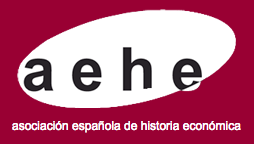From Autonomy to Cooperation. The Chilean Central Bank’s new targeting in the 1930s
DOI:
https://doi.org/10.33231/j.ihe.2021.01.003Keywords:
Central Bank, Great Depression, Autonomy, Exchange rates, Inflation, E3, E42, N16, N46Abstract
This article aims at analysing the development of the Central Bank of Chile during the Great Depression and the economic recovery process in the 1930s. It primarily examines the Bank’s relationship with the governments and the evolution of its policies. We have identified two main phenomena: The Bank’s autonomy reduction
and a change in its monetary policy strategy from the exchange rate to inflation. Throughout these years, the Bank went through different relationship schemes with the government. Due to the intensity of the Great Depression and the internal institutional disorder, the government subordinated the Bank during the most
dramatic years of the crisis (1931-1932), in what is known as a fiscal dominance scenario. Once the constitutional order returned, a cooperative relationship scheme established between the Bank and the Ministry of Finance under the Alessandri’s administration (1932-1938). Such cooperation was made possible mainly by the personalities who led both institutions, Guillermo Subercaseaux, President of the Central Bank, and Gustavo Ross Santa María, Minister of Finance. We propose and show that the understanding between both authorities allowed an economic recovery in a relatively short period taking into account the impact of the crisis.
This collaboration also gave the Bank an additional room for manoeuvre to recommend and implement a new monetary policy strategy focused on inflation and not on the exchange rate as was the norm under the gold standard system. From a methodological point of view, we have consulted the Bank’s Annual Reports, Monthly Bulletins and Board of Directors’ Minutes - the latter scarcely used by historiography. These primary sources
allowed us to analyse the policies adopted at a level of detail not previously covered by other research, especially concerning the views of the Board members. Similarly, the documentary corpus has allowed us to elaborate monthly time-series to reconstruct the most relevant banking and monetary variables in real values.
Downloads
Downloads
Published
How to Cite
Issue
Section
License
Copyright (c) 2021 Uziel González Aliaga

This work is licensed under a Creative Commons Attribution-NonCommercial-NoDerivatives 4.0 International License.
Aquellos autores/as que tengan publicaciones con esta revista, aceptan los términos siguientes
- Los autores/as conservarán sus derechos de autor y garantizarán a la revista el derecho de primera publicación de su obra, el cuál estará simultáneamente sujeto a la Licencia de reconocimiento de Creative Commons Reconocimiento-No comercial-Sin obra derivada 4.0 Internacional que permite a terceros compartir la obra siempre que se indique su autor y su primera publicación esta revista, y no permite hacer uso comercial de la misma ni tampoco obras derivadas.
- Los autores/as podrán adoptar otros acuerdos de licencia no exclusiva de distribución de la versión de la obra publicada (p. ej.: depositarla en un archivo telemático institucional o publicarla en un volumen monográfico) siempre que se indique la publicación inicial en esta revista.
Plagio y fraude científico
La publicación de un trabajo que atente contra los derechos de propiedad intelectual será responsabilidad de los autores/as, que serán los que asuman los conflictos que pudieran tener lugar por razones de derechos de autor. Los conflictos más importantes pueden darse por la comisión de plagios y fraudes científicos.
Se entiende por plagio:
- Presentar el trabajo ajeno como propio.
- Adoptar palabras o ideas de otros autores sin el debido reconocimiento.
- No emplear las comillas u otro formato distintivo en una cita literal.
- Dar información incorrecta sobre la verdadera fuente de una cita.
- El parafraseo de una fuente sin mencionar la fuente.
- El parafraseo abusivo, incluso si se menciona la fuente.
Las prácticas constitutivas de fraude científico son las siguientes:
- Fabricación, falsificación u omisión de datos y plagio.
- Publicación duplicada.
- Conflictos de autoría.






